
Automatic mills in Pardubice open to the public
Publisher
Tisková zpráva
29.09.2023 20:30
Tisková zpráva
29.09.2023 20:30
Czech Republic
Pardubice
Josef Gočár
Šépka architekti
TRANSAT architekti
Prokš Přikryl architekti
ZETTE atelier s.r.o.
Pardubice – One of the significant buildings designed by architect Josef Gočár, the Winternitz Automated Mills, is opening to the public after three years of intensive reconstruction. The historic complex of buildings, which had been in operation for more than 100 years, is undergoing a transformation into a modern cultural and social urban district. The transformation of the entire site has been initiated by the Winternitz Automated Mills Foundation established by Mr. and Mrs. Smetana. They purchased the site in 2016 and invited the city of Pardubice and the Pardubice Region to join in the renewal of this national cultural monument. The reconstruction of the entire complex, costing three-quarters of a billion crowns, was kick-started by the possibility of a 400 million crown European grant from the Integrated Regional Operational Program (IROP), which the property owners collectively secured through the ITI Hradecko-Pardubice agglomeration.
“The restoration of the Automated Mills is an extraordinary example of cooperation between the private, public, and non-profit sectors. The Automated Mills are now a cultural and social hub in Eastern Bohemia. This has been our only goal from the beginning, to bring the mills back to life, to have them operating all day long, and to transform them into a vibrant urban district where anyone can come,” says Lukáš Smetana, architect and owner of the Automated Mills.
“The construction work associated with the establishment of Sphere and the Gallery of the City of Pardubice cost the city approximately 300 million crowns, of which about 170 million crowns was covered by EU grants from ITI Hradecko-Pardubice agglomeration. I am really pleased that we were successful with the applications for both the construction part and the part concerning the top-quality equipment of Sphere,” informs Jan Nadrchal, the mayor of Pardubice, about the costs and EU support, adding: “We are proud that Pardubice will have a truly unique place that has the potential to become a magnet for tourists from across the country, and that is why we are pleased that a city-operated tourist information center will also be newly operating here.”
“We decided to convert the former flour warehouse into the Polytechnic Educational Center Sphere because it has a genius loci. Sphere is not a one-off amusement park, but a unique space for experiential learning and innovation for all generations, where we have top-notch educational facilities in four classrooms, four workshops, and two halls worth 89 million crowns, for which we applied for a grant of 68.4 million crowns. But perhaps even more importantly, we are building a team of people, instructors, and professionals from practice in cooperation with the regional chamber of commerce, companies, universities, and Mr. Director Koppitz. It is an investment in the future of our city and region,” explains Jakub Rychtecký, the deputy mayor for budget and education, who is responsible for the Sphere – Central Polytechnic Workshops and GAMPA projects, and who proposed relocating the Gallery of the City of Pardubice, which works with modern art, to the new city building. “GAMPA has gained amazing spaces with residential studios, and there is a unique connection of science and art. I believe that the outdoor staircase, offering a capacity of up to 250 seats with the possibility of screenings on our building, will also become very popular. I assert that just as Dolní Vítkovice are for Ostrava, the Automated Mills will be for Pardubice,” says Deputy Rychtecký.
The reconstruction of the most valuable building in the complex, the former main mill building, into the future Gočár Gallery began in May 2020. “It was definitely a challenge for us to help revitalize a brownfield site in the middle of a regional city,” comments Governor Martin Netolický. “The Gočár Gallery is our largest investment in culture in the history of the region. The total expenses within the European project amounted to 408 million crowns, of which 127.7 million was acquired from European sources. The Pardubice Region contributed 273 million crowns from its own budget,” the governor states.
“I believe that after a century of flour, a similarly successful century of art and culture will begin in the mills. Our regional gallery has begun a new phase of its activities here, coinciding with the 70th anniversary of its establishment. This is now connected with the name of architect Josef Gočár, supported by the descendants of his family. The name of the creator of the original form of the mills is also referenced in the name of the café on the ground floor – Café Gočár,” says the deputy governor of the Pardubice Region, Roman Línek.
The entire project of transforming the Automated Mills into a modern cultural and social urban district has been made possible by cooperation among several architectural firms. One of the key architects of the project is Zdeněk Balík and his studio Zette, who recommended to the Smetanas to purchase the industrial site and also established the principles of cooperation with the city and region. Along with other architectural studios, such as Šépka Architects (Sphere, GAMPA, and public spaces), Transat Architects (Gočár Gallery), and Prokš Přikryl Architects (Silo), they completed the first stage of the reconstruction.
The overall concept of restoring the historical complex of monuments, specifically the realization of its dominant part in 2023, revitalizes cultural heritage and brings a new dimension to the city of Pardubice.
More information can be found at www.automatickemlyny.eu
Who gave them their form? The mills are one of the early works of architect Josef Gočár, who designed them in 1909 for the Winternitz brothers and later returned to them several times during the renovations.
Since when have the mills been monumentally protected? They have been a cultural monument since 1983, and in 2014 they were included in the list of National Cultural Monuments of the Czech Republic.
How long were the Automated Mills in operation? The Automated Mills operated continuously for more than 100 years, producing flour until 2013. Since 2016, the mill brownfield has been transforming into a modern cultural and social urban district due to the initiative of Mariana and Lukáš Smetana, and since 2019, this transformation has been managed by their Winternitz Automated Mills Foundation.
Who was involved in the reconstruction? In addition to the Smetanas, the statutory city of Pardubice (GAMPA, Sphere) and the Pardubice Region (Gočár Gallery) participated in the transformation of the first stage of the complex and the adjacent public spaces. The Pardubice Tourist Information Center also has a branch here.
What does the first stage of reconstruction include? In the first stage of the reconstruction of the complex from 2019-2023, three buildings, the park in front of the main mill building, and a new inner square will be opened to the public.
What will be part of the second stage of construction? In the second stage of construction, from 2023-2026, three new residential and commercial buildings will be added to the complex, complemented by civic amenities according to a design by Zette studio led by architect Zdeněk Balík.
Automated Mills for the regional gallery
total expenses: 408.6 million CZK
EU grant: 127.7 million CZK
state budget contribution: 7.5 million CZK
contribution of Pardubice Region: 273.4 million CZ
Statutory City of Pardubice: Sphere and City Gallery
of Pardubice
total expenses: 388 million CZK
EU grant (ITI 2014-2020, ITI 2021+): 229.7 million CZK
state budget contribution: 9.5 million CZK
contribution of the statutory city of Pardubice: 148.8 million CZK
Winternitz Automated Mills Foundation: Automated Mills – Silo
and Parterre
- total expenses: 104 million CZK
- EU grant: 70 million CZK
- state budget contribution: 8.2 million CZK
- contribution of the Winternitz Automated Mills Foundation: 25.8 million CZK
Total:
- four projects, three applicants
- two activities funded by IROP
- total expenses: over 900 million CZK
- total EU grant (ITI 2014-2020, ITI 2021+): 427.4 million CZK
European projects in the complex have also been supplemented by other investments that will contribute to a friendly environment for visitors and employees.
History of the Automated Mills
- The Automated Mills ceased operations in 2013.
- In 2013, the independent initiative Mills for the City was established, which organized the multidisciplinary festival Automated Cultural Mills here.
- In 2015, the Pardubice City Council decided that they wanted to have an educational center for polytechnic fields in the city.
- In 2016, as a national cultural monument, the site was purchased by the Smetanas, who began revitalizing it and establishing the principles for its transformation.
- In 2017, the city of Pardubice approved the location of the Central Polytechnic Workshops (CPD) in the Automated Mills, specifically in the packaged flour warehouse building.
- In 2017, the Pardubice Region started looking for another location for the regional gallery due to the proposed new use of the space at the Pardubice Castle. In 2018, regional representatives negotiated the purchase of the main building of the mills from the Smetanas for these purposes.
- In 2018, the city of Pardubice presented the public with the location of the CPD and the city gallery of contemporary art GAMPA in one building. In 2019, the city administration took the keys to the packaged flour warehouse building from the Smetanas.
- In 2020, the city of Pardubice approved the establishment of the CPD, z.s., the future operator of the educational center Sphere.
- The first stage of the reconstruction of the entire mill complex began in 2020.
Opening of New Institutions
The Automated Mills are entering a new phase of operation with the opening of a total of five institutions. Under the auspices of the Winternitz Automated Mills Foundation, public spaces have been created in the entrance park, the inner square (piazzetta), and the multifunctional silo building, where visitors will also find a branch of the Pardubice Tourist Information Center. The former main mill building has become the new seat of the regional collection-forming Gočár Gallery, which was previously known as the East Bohemian Gallery in Pardubice. In the northern part of the complex, the reconstruction of the former packaged flour warehouse has resulted in a modern building housing an innovative educational center called Sphere and the Pardubice city gallery of contemporary art GAMPA.“The restoration of the Automated Mills is an extraordinary example of cooperation between the private, public, and non-profit sectors. The Automated Mills are now a cultural and social hub in Eastern Bohemia. This has been our only goal from the beginning, to bring the mills back to life, to have them operating all day long, and to transform them into a vibrant urban district where anyone can come,” says Lukáš Smetana, architect and owner of the Automated Mills.
Gočár's Grain Silo
For the first time in history, Gočár's grain silo will be opened to the public. While the ground floor houses a branch of the tourist information center, the upper floor has been transformed into a multifunctional hall with a terrace. “The highest floor of the silo offers impressive views of Pardubice and the surrounding area, including the castle, the historic center, Kunětická hora, and on clear days, you can even see Sněžka,” describes Smetana, adding: “However, for those who prefer to stay grounded, there are twelve concrete grain silos where cultural and social events, conferences, and exhibitions will take place.”Involvement of the City and Region
The city of Pardubice played a significant role in the reconstruction of the Automated Mills. It owns the building in the complex that was created from the reconstruction of the former packaged flour warehouse. In the lower part of this building, GAMPA (Gallery of the City of Pardubice) is located, with the Polytechnic Educational Center Sphere above it, which offers unconventional forms of education connecting science, modern technology, and the tradition of regional crafts.“The construction work associated with the establishment of Sphere and the Gallery of the City of Pardubice cost the city approximately 300 million crowns, of which about 170 million crowns was covered by EU grants from ITI Hradecko-Pardubice agglomeration. I am really pleased that we were successful with the applications for both the construction part and the part concerning the top-quality equipment of Sphere,” informs Jan Nadrchal, the mayor of Pardubice, about the costs and EU support, adding: “We are proud that Pardubice will have a truly unique place that has the potential to become a magnet for tourists from across the country, and that is why we are pleased that a city-operated tourist information center will also be newly operating here.”
“We decided to convert the former flour warehouse into the Polytechnic Educational Center Sphere because it has a genius loci. Sphere is not a one-off amusement park, but a unique space for experiential learning and innovation for all generations, where we have top-notch educational facilities in four classrooms, four workshops, and two halls worth 89 million crowns, for which we applied for a grant of 68.4 million crowns. But perhaps even more importantly, we are building a team of people, instructors, and professionals from practice in cooperation with the regional chamber of commerce, companies, universities, and Mr. Director Koppitz. It is an investment in the future of our city and region,” explains Jakub Rychtecký, the deputy mayor for budget and education, who is responsible for the Sphere – Central Polytechnic Workshops and GAMPA projects, and who proposed relocating the Gallery of the City of Pardubice, which works with modern art, to the new city building. “GAMPA has gained amazing spaces with residential studios, and there is a unique connection of science and art. I believe that the outdoor staircase, offering a capacity of up to 250 seats with the possibility of screenings on our building, will also become very popular. I assert that just as Dolní Vítkovice are for Ostrava, the Automated Mills will be for Pardubice,” says Deputy Rychtecký.
The reconstruction of the most valuable building in the complex, the former main mill building, into the future Gočár Gallery began in May 2020. “It was definitely a challenge for us to help revitalize a brownfield site in the middle of a regional city,” comments Governor Martin Netolický. “The Gočár Gallery is our largest investment in culture in the history of the region. The total expenses within the European project amounted to 408 million crowns, of which 127.7 million was acquired from European sources. The Pardubice Region contributed 273 million crowns from its own budget,” the governor states.
“I believe that after a century of flour, a similarly successful century of art and culture will begin in the mills. Our regional gallery has begun a new phase of its activities here, coinciding with the 70th anniversary of its establishment. This is now connected with the name of architect Josef Gočár, supported by the descendants of his family. The name of the creator of the original form of the mills is also referenced in the name of the café on the ground floor – Café Gočár,” says the deputy governor of the Pardubice Region, Roman Línek.
The entire project of transforming the Automated Mills into a modern cultural and social urban district has been made possible by cooperation among several architectural firms. One of the key architects of the project is Zdeněk Balík and his studio Zette, who recommended to the Smetanas to purchase the industrial site and also established the principles of cooperation with the city and region. Along with other architectural studios, such as Šépka Architects (Sphere, GAMPA, and public spaces), Transat Architects (Gočár Gallery), and Prokš Přikryl Architects (Silo), they completed the first stage of the reconstruction.
Second Stage of Reconstruction
The second stage of the reconstruction of the Automated Mills will start at the beginning of next year and will include the construction of residential and commercial buildings, which are expected to be completed approximately by 2026. This second phase of the project aims to close the complex off from the eastern side and create a fully-fledged urban district with civic amenities.The overall concept of restoring the historical complex of monuments, specifically the realization of its dominant part in 2023, revitalizes cultural heritage and brings a new dimension to the city of Pardubice.
More information can be found at www.automatickemlyny.eu
Automated Mills
Where are they located? The Automated Mills complex is located in the center of Pardubice on the banks of the Chrudimka River. Together with Pernštýn Square and the Castle, it forms the so-called golden triangle of Pardubice.Who gave them their form? The mills are one of the early works of architect Josef Gočár, who designed them in 1909 for the Winternitz brothers and later returned to them several times during the renovations.
Since when have the mills been monumentally protected? They have been a cultural monument since 1983, and in 2014 they were included in the list of National Cultural Monuments of the Czech Republic.
How long were the Automated Mills in operation? The Automated Mills operated continuously for more than 100 years, producing flour until 2013. Since 2016, the mill brownfield has been transforming into a modern cultural and social urban district due to the initiative of Mariana and Lukáš Smetana, and since 2019, this transformation has been managed by their Winternitz Automated Mills Foundation.
Who was involved in the reconstruction? In addition to the Smetanas, the statutory city of Pardubice (GAMPA, Sphere) and the Pardubice Region (Gočár Gallery) participated in the transformation of the first stage of the complex and the adjacent public spaces. The Pardubice Tourist Information Center also has a branch here.
What does the first stage of reconstruction include? In the first stage of the reconstruction of the complex from 2019-2023, three buildings, the park in front of the main mill building, and a new inner square will be opened to the public.
What will be part of the second stage of construction? In the second stage of construction, from 2023-2026, three new residential and commercial buildings will be added to the complex, complemented by civic amenities according to a design by Zette studio led by architect Zdeněk Balík.
Automated Mills – Financing
Pardubice Region: Restoration of the WinternitzAutomated Mills for the regional gallery
total expenses: 408.6 million CZK
EU grant: 127.7 million CZK
state budget contribution: 7.5 million CZK
contribution of Pardubice Region: 273.4 million CZ
Statutory City of Pardubice: Sphere and City Gallery
of Pardubice
total expenses: 388 million CZK
EU grant (ITI 2014-2020, ITI 2021+): 229.7 million CZK
state budget contribution: 9.5 million CZK
contribution of the statutory city of Pardubice: 148.8 million CZK
Winternitz Automated Mills Foundation: Automated Mills – Silo
and Parterre
- total expenses: 104 million CZK
- EU grant: 70 million CZK
- state budget contribution: 8.2 million CZK
- contribution of the Winternitz Automated Mills Foundation: 25.8 million CZK
Total:
- four projects, three applicants
- two activities funded by IROP
- total expenses: over 900 million CZK
- total EU grant (ITI 2014-2020, ITI 2021+): 427.4 million CZK
European projects in the complex have also been supplemented by other investments that will contribute to a friendly environment for visitors and employees.
The English translation is powered by AI tool. Switch to Czech to view the original text source.
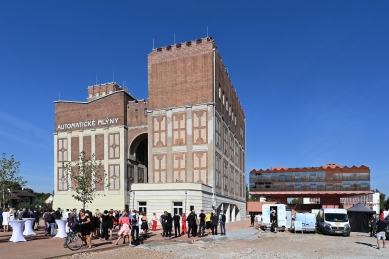
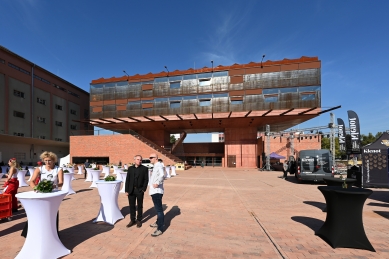
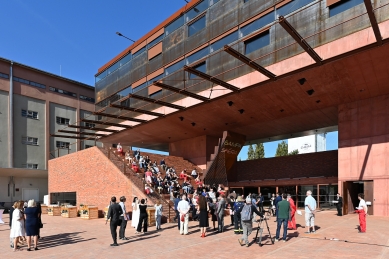

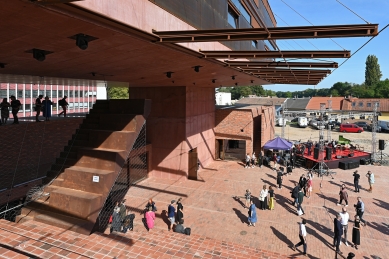
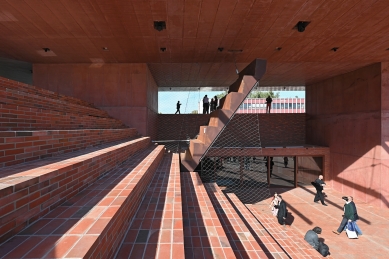
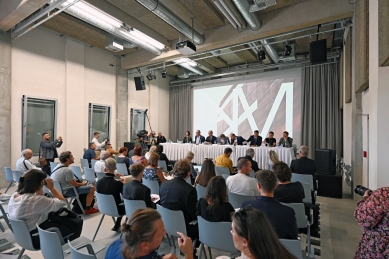
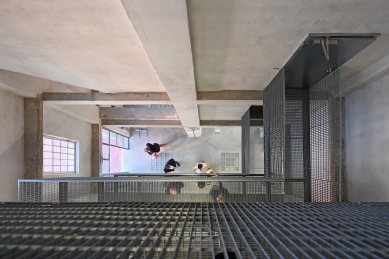
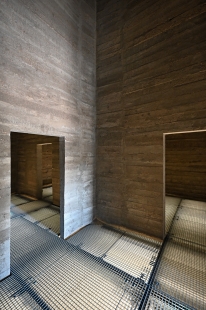
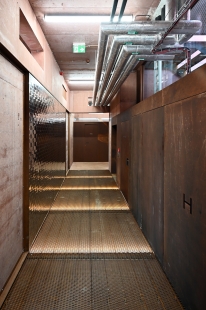
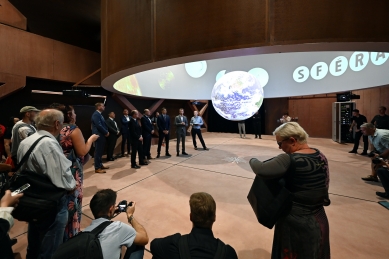
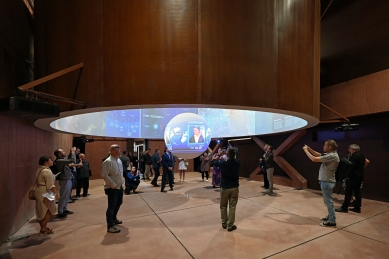
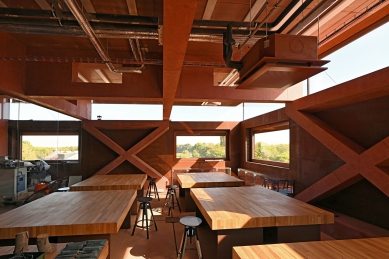
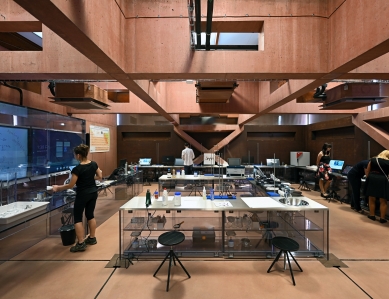
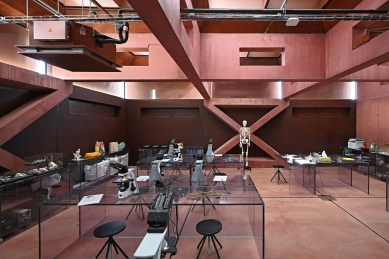

0 comments
add comment
Related articles
0
03.11.2025 | Gočár's gallery in Pardubice will be expanded, the project will be completed in four years
5
14.05.2024 | The Club for Old Prague awarded the new building at the automatic mills in Pardubice
0
23.04.2024 | The Pardubice Region has announced an architectural competition for the expansion of the Gočár Gallery
2
30.09.2023 | Automatic mills in Pardubice are set for further construction development
0
22.06.2023 | The Gočár Gallery in Pardubice is launching its trial operation, located in the mills
0
10.01.2023 | The exhibitions of Gočár's gallery at the Pardubice castle are ending, they are moving to the mills
0
06.12.2022 | Gočárova Gallery in Pardubice is structurally finished
0
13.10.2022 | The East Bohemian Gallery in Pardubice bids farewell to the exhibition spaces in the castle
0
11.07.2022 | The Eastern Bohemian Gallery Pardubice is beginning preparations for a move to new premises
0
14.06.2022 | The construction of the workshops and gallery in Pardubice is proceeding according to plan and is set to be completed in spring 2022
0
23.11.2021 | The construction phase of the future gallery in the mills in Pardubice will take three months longer
0
08.12.2020 | In the mills in Pardubice, the conversion into a gallery continues











